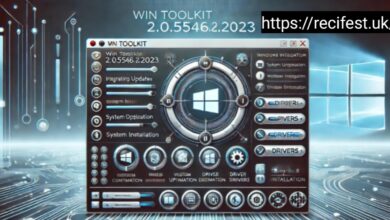Innovations in Mining Technology: The Future of Equipment and Machinery

The mining industry has always been at the forefront of technological innovation, driven by the need to improve efficiency, safety, and sustainability. https://balkancorex.rs As global demand for minerals and resources continues to grow, the industry is experiencing a technological revolution that is transforming how mining operations are conducted. From autonomous vehicles to advanced data analytics, innovations in mining technology are shaping the future of equipment and machinery. This article explores some of the most significant advancements and their potential impact on the industry.
Autonomous Vehicles and Equipment
One of the most groundbreaking developments in mining technology is the rise of autonomous vehicles and equipment. Companies like Rio Tinto and Caterpillar have been pioneers in implementing autonomous haul trucks, drills, and other machinery in their operations. These machines can operate without human intervention, reducing the risk of accidents and increasing efficiency.
Autonomous vehicles are equipped with sophisticated sensors and AI systems that allow them to navigate challenging terrains, avoid obstacles, and make real-time decisions. This technology not only improves safety but also allows for 24/7 operations, leading to significant cost savings. As the technology matures, we can expect to see a broader adoption of autonomous equipment across the mining industry.
Advanced Data Analytics and AI
The integration of advanced data analytics and artificial intelligence (AI) is another key innovation transforming mining technology. By leveraging big data, mining companies can optimize their operations, improve decision-making, and predict equipment failures before they occur. Predictive maintenance, powered by AI, is particularly beneficial as it reduces downtime and maintenance costs while extending the lifespan of machinery.
AI-driven analytics also play a crucial role in resource exploration. By analyzing geological data, AI can identify potential mineral deposits with greater accuracy and speed, reducing the time and cost associated with traditional exploration methods. This technology is enabling mining companies to discover new resources and make more informed investment decisions.
Electrification and Sustainable Mining Equipment
As the world shifts towards sustainability, the mining industry is under pressure to reduce its carbon footprint. Electrification of mining equipment is a significant step towards achieving this goal. Electric vehicles (EVs) and machinery powered by renewable energy sources are becoming increasingly common in mining operations. Companies like Sandvik and Epiroc are leading the charge by developing electric drills, loaders, and haul trucks.
Electrification not only reduces greenhouse gas emissions but also lowers operating costs. Electric machinery requires less maintenance and offers higher energy efficiency compared to traditional diesel-powered equipment. As battery technology advances and the cost of renewable energy continues to fall, the adoption of electric mining equipment is expected to accelerate.
Remote Operations and Automation
The COVID-19 pandemic has highlighted the importance of remote operations in the mining industry. Remote operation centers, where operators can control machinery from a safe distance, have become more prevalent. This technology allows for continuous operation even in the face of disruptions, such as pandemics or natural disasters.
Automation is also playing a critical role in enhancing remote operations. Automated drilling rigs, for example, can be controlled remotely, reducing the need for on-site personnel and minimizing the exposure to hazardous conditions. As remote and automated technologies evolve, they will enable more efficient and safer mining operations, particularly in remote or dangerous locations.
The Role of Drones and Robotics
Drones and robotics are becoming indispensable tools in modern mining operations. Drones equipped with high-resolution cameras and LiDAR technology are used for aerial surveys, mapping, and monitoring of mining sites. They provide real-time data and imagery, allowing for better planning and management of resources.
Robotics, on the other hand, is being used to automate repetitive and dangerous tasks, such as drilling and blasting. Robotic systems can operate in environments that are too hazardous for humans, improving safety and efficiency. As the technology progresses, we can expect to see more sophisticated drones and robotic systems being deployed in the mining industry.
Challenges and Future Prospects
While the innovations in mining technology are promising, they also come with challenges. The high cost of implementing new technologies, especially for smaller mining companies, can be a significant barrier. Additionally, the transition to autonomous and electric equipment requires a skilled workforce that is trained in operating and maintaining these advanced systems.
Despite these challenges, the future of mining technology looks bright. The industry is on the cusp of a digital transformation that will redefine how mining operations are conducted. As technology continues to advance, mining companies will need to adapt to stay competitive and meet the growing demand for minerals and resources.
Conclusion
The mining industry is undergoing a technological revolution that is transforming the future of equipment and machinery.https://balkancorex.rs Autonomous vehicles, advanced data analytics, electrification, remote operations, and robotics are just some of the innovations that are driving this change. While challenges remain, the adoption of these technologies will lead to safer, more efficient, and sustainable mining operations. As the industry continues to evolve, the future of mining technology holds great promise for a more prosperous and environmentally conscious world.




